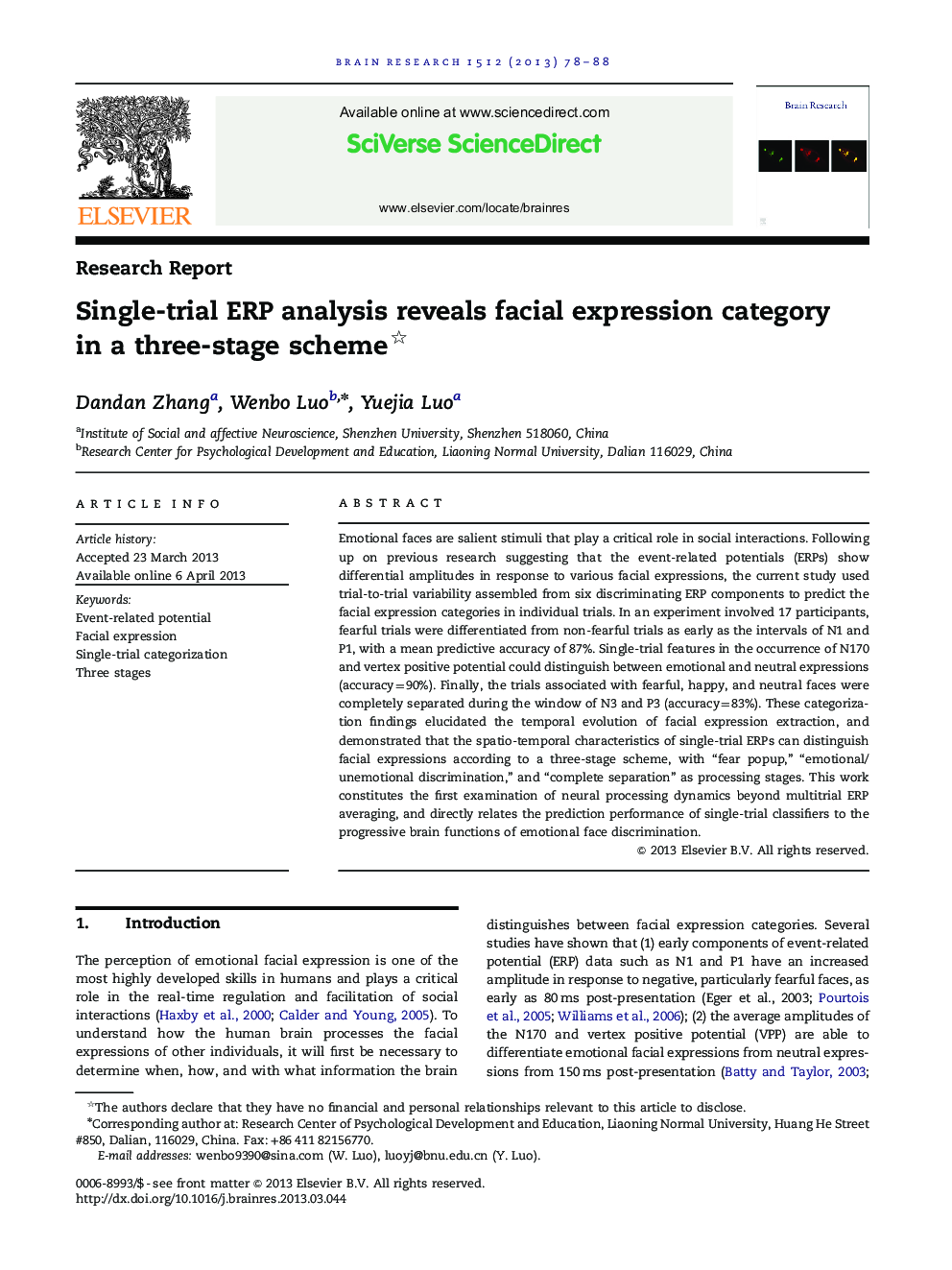| Article ID | Journal | Published Year | Pages | File Type |
|---|---|---|---|---|
| 4324684 | Brain Research | 2013 | 11 Pages |
•ERPs were analyzed on a single-trial level in different emotional face conditions.•Trial-to-trial variability successfully predicted the face category in each trial.•Single-trial evidences proved three-stage model of facial expression processing.
Emotional faces are salient stimuli that play a critical role in social interactions. Following up on previous research suggesting that the event-related potentials (ERPs) show differential amplitudes in response to various facial expressions, the current study used trial-to-trial variability assembled from six discriminating ERP components to predict the facial expression categories in individual trials. In an experiment involved 17 participants, fearful trials were differentiated from non-fearful trials as early as the intervals of N1 and P1, with a mean predictive accuracy of 87%. Single-trial features in the occurrence of N170 and vertex positive potential could distinguish between emotional and neutral expressions (accuracy=90%). Finally, the trials associated with fearful, happy, and neutral faces were completely separated during the window of N3 and P3 (accuracy=83%). These categorization findings elucidated the temporal evolution of facial expression extraction, and demonstrated that the spatio-temporal characteristics of single-trial ERPs can distinguish facial expressions according to a three-stage scheme, with “fear popup,” “emotional/unemotional discrimination,” and “complete separation” as processing stages. This work constitutes the first examination of neural processing dynamics beyond multitrial ERP averaging, and directly relates the prediction performance of single-trial classifiers to the progressive brain functions of emotional face discrimination.
